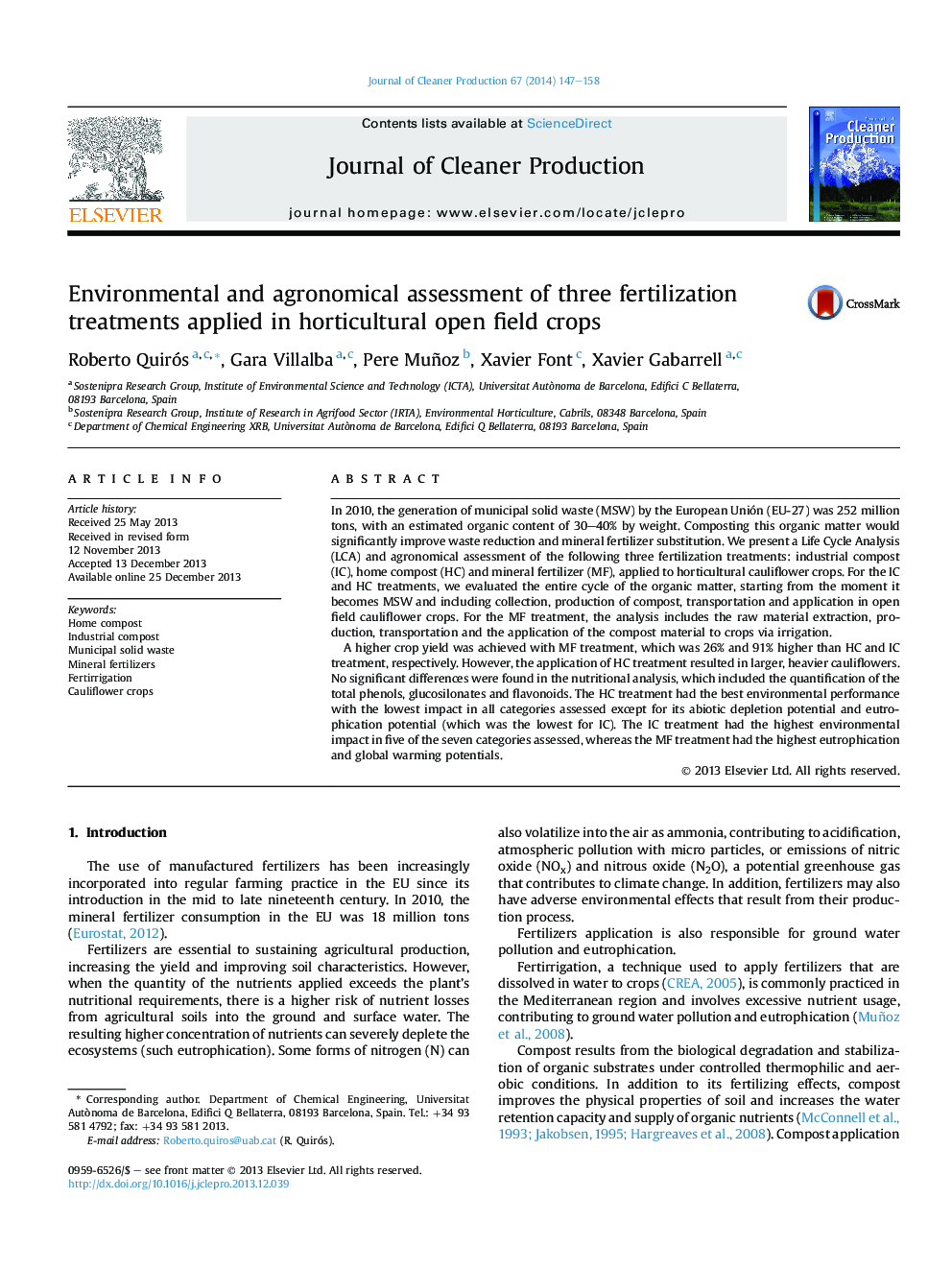| کد مقاله | کد نشریه | سال انتشار | مقاله انگلیسی | نسخه تمام متن |
|---|---|---|---|---|
| 1744950 | 1522179 | 2014 | 12 صفحه PDF | دانلود رایگان |
• The consumption of mineral fertilizers in the EU-27 was 18 millions tonnes for 2010.
• Mineral fertilizers may have adverse environmental effects resulting from their production process.
• Compost a product from municipal solid waste is an attractive substitute of mineral fertilizer.
• Fertilization treatment with home compost showed the best performance in environmental terms.
• Environmental impacts of industrial composting are mainly due to the collection of organic fraction.
In 2010, the generation of municipal solid waste (MSW) by the European Unión (EU-27) was 252 million tons, with an estimated organic content of 30–40% by weight. Composting this organic matter would significantly improve waste reduction and mineral fertilizer substitution. We present a Life Cycle Analysis (LCA) and agronomical assessment of the following three fertilization treatments: industrial compost (IC), home compost (HC) and mineral fertilizer (MF), applied to horticultural cauliflower crops. For the IC and HC treatments, we evaluated the entire cycle of the organic matter, starting from the moment it becomes MSW and including collection, production of compost, transportation and application in open field cauliflower crops. For the MF treatment, the analysis includes the raw material extraction, production, transportation and the application of the compost material to crops via irrigation.A higher crop yield was achieved with MF treatment, which was 26% and 91% higher than HC and IC treatment, respectively. However, the application of HC treatment resulted in larger, heavier cauliflowers. No significant differences were found in the nutritional analysis, which included the quantification of the total phenols, glucosilonates and flavonoids. The HC treatment had the best environmental performance with the lowest impact in all categories assessed except for its abiotic depletion potential and eutrophication potential (which was the lowest for IC). The IC treatment had the highest environmental impact in five of the seven categories assessed, whereas the MF treatment had the highest eutrophication and global warming potentials.
Journal: Journal of Cleaner Production - Volume 67, 15 March 2014, Pages 147–158
